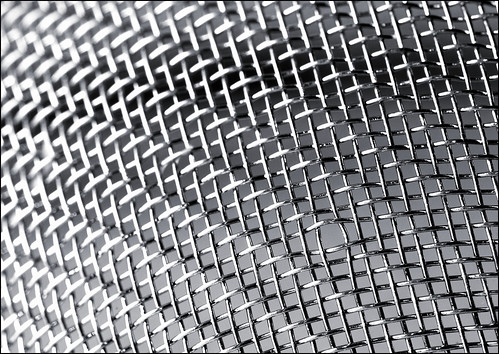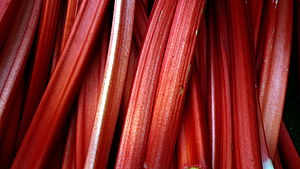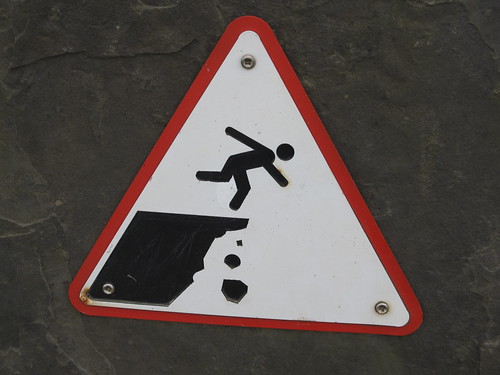 It was a 3.4 mile run that fit nicely into my training plan. It also happened to be the first event held at the new Circuit Of The Americas (COTA). Nice coincidence! Better yet, Formula Run would provide a great opportunity to get a sneak peek of the circuit just two weeks before the the wail of Formula One cars will be heard throughout central Texas.
It was a 3.4 mile run that fit nicely into my training plan. It also happened to be the first event held at the new Circuit Of The Americas (COTA). Nice coincidence! Better yet, Formula Run would provide a great opportunity to get a sneak peek of the circuit just two weeks before the the wail of Formula One cars will be heard throughout central Texas.
There was no way that I was going to miss this event. There were 5,000 runners in complete agreement with me, with a large majority of them out for a morning stroll and sightseeing tour. After the run, there was just one word to describe my first thoughts of COTA: wow. This is going to be one amazing race course.
 If you were to ask any 10 athletes, regardless of their sport, to tell you what the most important aspect of their training is, you will invariably be told “the training sessions”. Athletes are always concerned about doing the right workouts. They will search high and low for the workout that will take them to training and performance nirvana.
If you were to ask any 10 athletes, regardless of their sport, to tell you what the most important aspect of their training is, you will invariably be told “the training sessions”. Athletes are always concerned about doing the right workouts. They will search high and low for the workout that will take them to training and performance nirvana.
In the grand scheme of things, the training session serves as perhaps an hour or so of training stimulus. What about the 23 or more hours until the next training stimulus? That’s a lot of time for recovery and adaptation to occur. Recovery reigns supreme in training and injury – and here’s why.
 The formal name for it is the Patient Protection and Affordable Care Act, signed into law on March 23, 2010. Since then, it has come to be known unceremoniously as “Obamacare”. This was the most significant regulatory change in health care since 1965, when Medicare was introduced. Speaking of which, we now have a proposal for “Vouchercare”, a “new, sustainable version of Medicare” according to the Republican Party.
The formal name for it is the Patient Protection and Affordable Care Act, signed into law on March 23, 2010. Since then, it has come to be known unceremoniously as “Obamacare”. This was the most significant regulatory change in health care since 1965, when Medicare was introduced. Speaking of which, we now have a proposal for “Vouchercare”, a “new, sustainable version of Medicare” according to the Republican Party.
None of this should be about “Whatever-Care” or any other fear-provoking moniker – it should be about health care. But in order to do so, we have to set the record straight first and foremost. We, as a nation, need a referendum on health care. Let’s get down to some basic decisions that have nothing to do with political party or affiliation.
 On a beautiful fall day in October, I had a sudden, chilling realization: the time change is upon us in one week. Ugh. I like my sunshine. The upcoming time change always harkens me back to my days in Canada. Back then, it would signify the coming of a long, cold, blustery winter. It would be dark going to work, and it would be dark leaving work. You had to go outside at lunch time to acknowledge the sun’s existence. Just the thought of this makes me want to hibernate.
On a beautiful fall day in October, I had a sudden, chilling realization: the time change is upon us in one week. Ugh. I like my sunshine. The upcoming time change always harkens me back to my days in Canada. Back then, it would signify the coming of a long, cold, blustery winter. It would be dark going to work, and it would be dark leaving work. You had to go outside at lunch time to acknowledge the sun’s existence. Just the thought of this makes me want to hibernate.
Fortunately, a couple of days after the time change, we will also see the end of the current election cycle. That has to be a good thing – or lets hope so. A least the sound bites will change. Of course, the election may also give us all reason to hibernate for 4 years – but I digress.
Episode 52 of the Rhubarb Report takes a look at politics, football, and a brief look forward to college hoops.
 We are so close - and yet so far away, in so many ways - to the next great Revolution.
We are so close - and yet so far away, in so many ways - to the next great Revolution.
Mankind has experienced the Scientific Revolution and the Industrial Revolution. Modern-day science has provided the health and medical communities with a tremendous number of studies, analyses and reviews that now give clinicians a strong evidence-based foundation for the assessment and treatment of musculoskeletal disorders.
We now have all the makings of a Health Revolution. We have all the reasons in the world to have that great clinical epiphany. We are standing on the edge of the cliff ready to jump.
Yet many don’t. And won’t. They will choose to not make the next step.
When push comes to shove, beliefs can be far stronger and more resilient than the evidence.
 The theme of the week has been pushing the boundaries of human performance. Today’s post continues that theme directly into my own personal timeline. No, I didn’t break Mach 1, nor did I complete 540.8 miles of endurance sport mayhem. I didn’t win my age group. Fair enough. But there was that day when I went 140.6 miles under my own power – at Ironman USA in Lake Placid, New York.
The theme of the week has been pushing the boundaries of human performance. Today’s post continues that theme directly into my own personal timeline. No, I didn’t break Mach 1, nor did I complete 540.8 miles of endurance sport mayhem. I didn’t win my age group. Fair enough. But there was that day when I went 140.6 miles under my own power – at Ironman USA in Lake Placid, New York.
I used to watch “Wide World Of Sports” as a kid. I can distinctly remember watching Julie Moss crawl to the finish of Ironman Hawaii in 1982 and asking aloud, “why would anyone want to do this?”. Of course, that was long before I became a physiotherapist or started coaching endurance sport athletes. Our perspectives certainly evolve over time.
Fast forward to 2004 – when I found my own answer to that very question.

There does seem to be an intriguing competitive “tension” between the “extreme” athletes in running and triathlon. Ultra-runners will be quick to remind Ironman triathletes that 140.6 miles of three sports is just not the same as 100 miles of running. Can’t debate that, for sure. Ironman triathletes, on the other hand, are quick to note that their sport involves three disciplines, not just one. Can’t imagine many ultra-runners putting in 2.4 miles of swimming or 112 miles of cycling.
Here’s a thought: what if you could do both in the same year?
Enter Paul Terranova – Austin endurance sports athlete. The name of the beast in question? His self-proclaimed “Grand Kona Slam” – now ceremoniously referred to here as the Quintuple Crown Of Endurance Sports. Who needs two events when you can have five?
 "Running Injuries: Etiology And Recovery- Based Treatment" (co-author Bridget Clark, PT) appears in the third edition and fourth editions of "Clinical Orthopaedic Rehabilitation: A Team Approach" by Charles Giangarra, MD and Robert C. Manske, PT.
"Running Injuries: Etiology And Recovery- Based Treatment" (co-author Bridget Clark, PT) appears in the third edition and fourth editions of "Clinical Orthopaedic Rehabilitation: A Team Approach" by Charles Giangarra, MD and Robert C. Manske, PT.
 Allan Besselink, PT, DPT, Ph.D., Dip.MDT has a unique voice in the world of sports, education, and health care. Read more about Allan here.
Allan Besselink, PT, DPT, Ph.D., Dip.MDT has a unique voice in the world of sports, education, and health care. Read more about Allan here.
 Top 5 finalist in three categories: "Best Overall Blog", "Best PT Blog" and "Best Advocacy Blog".
Top 5 finalist in three categories: "Best Overall Blog", "Best PT Blog" and "Best Advocacy Blog".